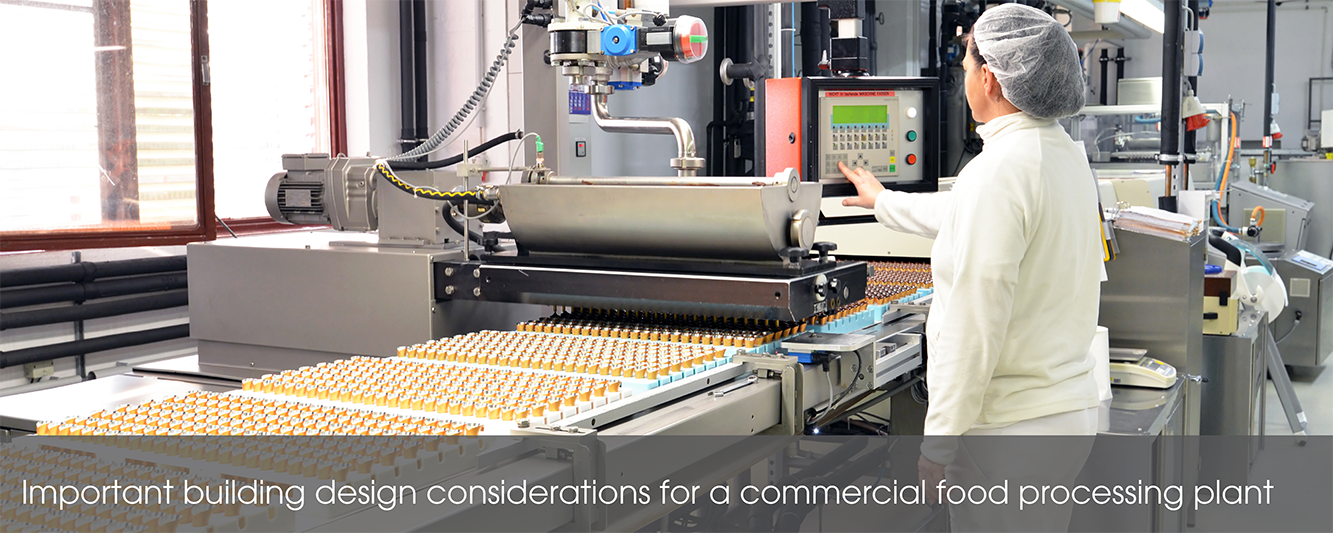
Can't see the region you're looking for? You can find a list of our global locations here

Any time food preparation is involved in a commercial space, there are extra considerations that must be taken to ensure that the highest safety standards are adhered to and that the building will serve as an efficient workspace. Hygienic surface cleaning, airflow, floor drainage, and safe working conditions are all elements that can be impacted by a building’s interior design.
When it comes to selecting wall and flooring designs for commercial food processing plants, there are some key aspects to consider to build a space that is both safe and productive. Take a look at a few of the essential considerations that can help boost safety and efficiency in a commercial food processing plant.
Professional food prep often requires several employees who are constantly moving about the production area. Line cooks, preppers, bulk suppliers, and packaging coordinators are constantly on the move and there are often liquid spills involved, leading to a common risk in commercial kitchens — slips and falls. Not only can slips cause serious harm and injury to employees, but they can also damage products and equipment, not to mention slow down the overall production. Creating a safe workspace is essential for employees to feel confident at work, which is why slip-resistant flooring, quick cleanups, and other flooring designs that prevent slippage are all a must in commercial food processing plants.
Another way to help keep the floor safe and clean is to install an effective drainage system, such as meat processing floor drains, that can help remove spilled liquids from the floor faster. Drain layout and dispersal is essential in the flooring design process for commercial food processing plants, as a smart layout can quicken drainage and help create a safer workspace.
Keeping the workspace clean and hygienic is another essential aspect of food processing plants. Builders should choose smooth interior surfaces that are capable of quick and effective cleaning. For example, tilt up construction can be a beneficial choice, as it provides a sleek, smooth surface that can be wiped down and disinfected easily, unlike textured walls that feature gaps or beveled surfaces — these surfaces can be difficult to reach and provide hidden areas for mold growth to occur.
Wall protection should be another consideration when building the interior walls for a commercial food processing plant. Not all wall types are ideal for cooking and food prep areas, which often endure considerable exposure to heat, moisture, grease splatter, and smoke. Durability, heat-tolerance, fire-resistance, and moisture-resistance are some of the qualities that should be prioritized when selecting a type of wall for a commercial kitchen.
Adequate airflow is another important component that comes into play with designing commercial food processing plants. High temps, humidity, and smoke are everyday occurrences of many commercial kitchens. Airflow is essential to remove smoke and provide a safe workplace for employees. In addition, stagnant air can increase the risk of mold development, which can be a huge problem for food prep areas. In other words, securing consistent airflow is a must for commercial food processing plants to be successful.
Industrial dampers can help maximize ventilation so that the food processing plant maintains a safe environment for staff and produce storage. In addition to including dampers, the placement of these airflow solutions should be strategic in order to maximize their effectiveness, and therefore should be included during the initial stages of building design.
By taking all of these elements into consideration during the building design process, builders can effectively create safe and efficient work environments for the commercial production of food.
Skylar Ross is a contributor to the Innovative Materials blog. He is a content writer for the construction and home improvement industries with an interest in landscaping, outdoor remodeling, and interior design. Skylar is focused on educating homeowners, contractors, and architects on innovative materials and methods of construction that increase property value, improve sustainability, and create a warm and welcoming ambiance.